Planting edible honeysuckle in the fall in open ground: the timing of planting seedlings, rules for care and cultivation
Probably, you were seduced by the specific taste of honeysuckle berries, very similar to forest blueberries, which is also very useful, so you decided to plant this earliest berry bush on your site, right?
Next, you will learn about when and how to plant honeysuckle correctly in the fall, what care measures need to be taken in order to consistently get high yields.
Important! Next, we will talk about planting and growing edible honeysuckle (blue).
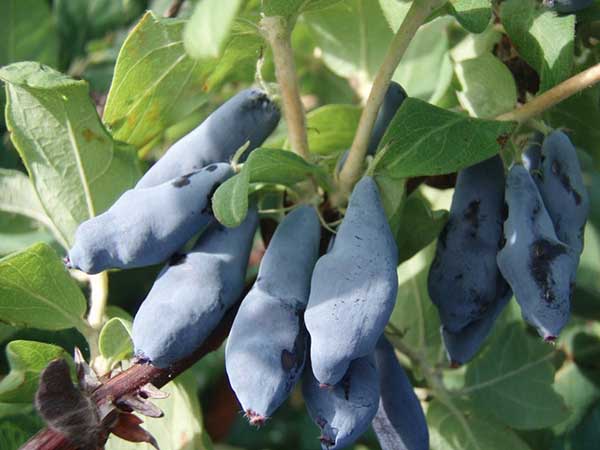
There is also a decorative honeysuckle (Caprifoil, Tatar honeysuckle, which has red inedible berries).
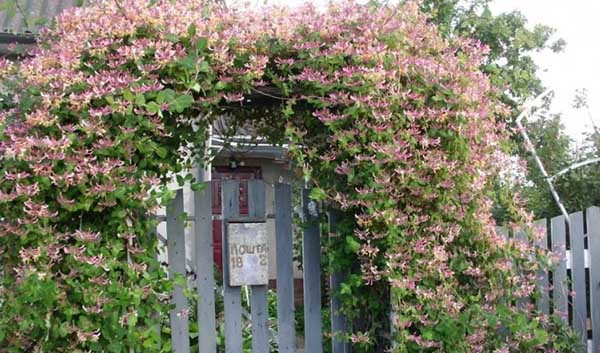
Content
When to plant honeysuckle in autumn: planting dates
Of course, honeysuckle can be planted as in the spring, and in the fall.
However, most gardeners agree that autumn is the best time to plant honeysuckle.
The fact is that, as you know, honeysuckle begins its vegetation very early, and plant it in spring need before bud break. Consequently, it will be quite difficult to have time (as well as to find planting material on sale).
As for the landmark, you need to have time to plant the honeysuckle seedlings 2-4 weeks before the cold snap (the first night frosts), this is how much time is needed to root in a new place.
However! Honeysuckle seedlings are most often sold in containers (i.e., with a closed root system), which means that it can be planted throughout the warm season, i.e. and in the spring, and in the summer, and in the fall.
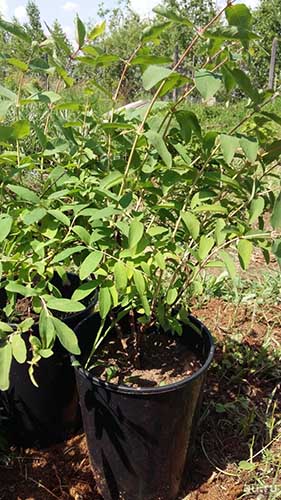
As for the approximate dates for planting honeysuckle in autumn, then, naturally, depending on the climatic characteristics of the region, they will differ.
- In the South of Russia - since October.
- In the Middle Strip (Moscow region) - from early September to the second half of October.
- In Siberia and the Urals, honeysuckle is planted earlier - from late August to late September.
By the way! Honeysuckle is an absolutely winter-hardy and frost-resistant berry shrub, therefore, it can be planted and successfully grown even in Siberia and the Urals.
According to the lunar calendar for 2021
Choose a specific date for planting seedlings can help you moon calendar.
So, favorable days for the autumn planting of honeysuckle in 2021, according to the lunar calendar, are:
- in September - 19-26;
- in October - 3-13, 18-21.
Of course, it is not always possible to get to the dacha on the appropriate days, so the main thing is not to land on dates that are unfavorable according to the lunar calendar (days of the Full Moon and New moons, as well as the period when the Moon is in Aquarius, because it is a barren and dry sign -italicized).
Unfavorable days, according to the lunar calendar for 2021, for planting honeysuckle seedlings in autumn, the following dates are:
- in August - 8, 20-21, 22;
- in September - 7, 16-17, 21;
- in October - 6, 13-15, 20;
- In November - 5, 10-11, 19.
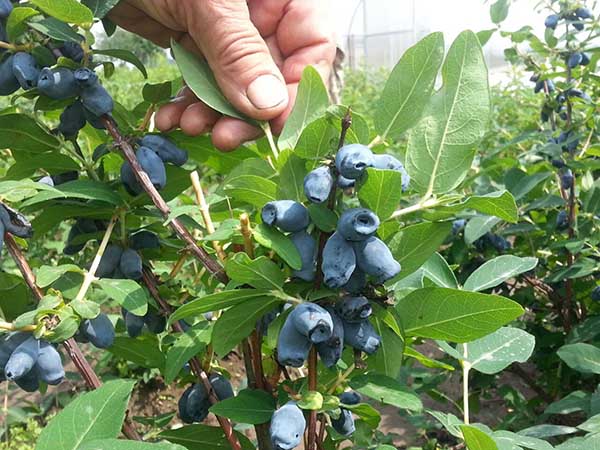
How to properly plant honeysuckle in the fall
Selection of seedlings and the need for cross-pollination
As you know, honeysuckle begins to bear fruit as early as 3-4 years of age, so it makes sense to buy 2-3 year old seedlingsto speed up fruiting. And you need to pick up not one, but necessarily several, moreover, different varieties.
Advice! The most popular varieties: Nymph, Morena, Amphora, Blue Spindle, Lakomka, Blue Bird, Cinderella, Leningrad giant, Zinri, Volkhova, Yugan. At the same time, Bakchar varieties of honeysuckle are especially appreciated (the same Bakchar giant and others).
The taste of fruits of different varieties can differ significantly, and you need to choose according to your taste (some with a slight bitterness and astringency, others are sour, and some are sweeter).
Honeysuckle - cross-pollinated plant (flowers are bisexual, but self-fertile), in other words, to get a decent harvest, you should plant at least 2, and preferably 3-5 different varieties.
Otherwise (if the shrub is only 1 or all varieties are the same), honeysuckle will bloom profusely, and fruiting will be very weak if the berries are tied at all.
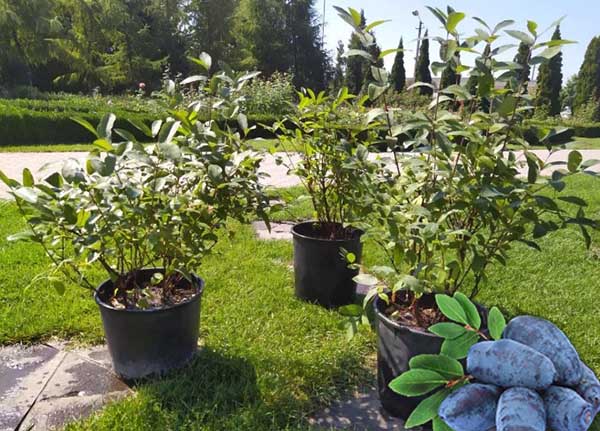
By the way! The same way maize is planted and grown.
Place on the site
It is generally accepted that a place for honeysuckle should be chosen the sunniest on the site... Indeed, honeysuckle is very light-loving plant, in the shade it grows poorly (it turns out to be low) and almost does not lay flower buds, and the berries become smaller.
Interesting! However, you must understand that honeysuckle is originally a forest plant, which means it can feel comfortable. in a slightly shaded place (with diffused sunlight), so to speak, under the canopy (crowns) of trees.
In other words, honeysuckle prefers a temperate and cool climate. The plant is northern, so in the South of Russia it will be difficult for her, especially in the sun.
It will also be just fine if on the north side the honeysuckle is protected by some kind of summer cottage or fence.
In no case should you plant honeysuckle in the lowlands, where moisture stagnates in spring due to melting snow.
Advice! Most honeysuckle lovers unanimously agree that if the planting site is well chosen, then no special care for the honeysuckle will be required in the future.
Suitable soil
Honeysuckle will thrive if the soil is loose and fertileand will have neutral reaction (pH 6-7). However, it is believed that the culture can tolerate both a slightly acidic (pH 5.5, and slightly alkaline medium (pH 7.5).
Note! Honeysuckle is, although a forest culture, but not heather, which means she does not need any acidic soil.
If you do not know what is the acidity of the soil in your area, then be sure to find out.
And then deacidify or, conversely, acidify.
Soil type is best suited sandy loam or light black soil.
In this case, it is very important that at the landing site there was no stagnation of water.
Important! If the soil is excessively heavy and clayey, the moisture will stagnate, the root collar of the seedling will rot and the plant will simply disappear.
On the contrary, if the soil is too sandy, then the seedling will constantly suffer from a lack of moisture, which will evaporate very quickly after watering, which can simply dry out.
Planting pit: dimensions and soil to fill
It is advisable to prepare and fill the planting hole in advance (optimally in spring - in May), at least a month or a couple of weeks before planting the seedling in the ground.
Optimal planting pit sizes for a honeysuckle seedling - 40-50 cm deep and the same 40-50 cm wide (in diameter).
Advice! If you are planting a seedling in a container, then you just need to make it 2-3 times the size of the pot.
To reserve food for several years, you should add the following to the landing hole organic and mineral fertilizers:
- the top fertile layer of soil (which you have left after digging a hole);
- compost or humus (half a bucket-bucket);
- forest (coniferous) litter (namely litter together with forest land, but not sour!);
If your soil is clay, then you should add peat and sand; if sandy, then a little clay (or more humus and forest land).
- superphosphate (80-100 grams) or 200-400 grams of bone meal;
- potassium sulfate (60-80 grams) or 200-400 grams wood ash.
Alternatively, you can use the complex mineral fertilizer "Diammofoska" (you need about 80-100 grams).
Next, be sure to thoroughly mix organic matter, mineral water and your garden soil, and then water to shrink the soil. When doing this, the pit should be about half full of your formula.
At what distance to plant bushes
We remind you! Honeysuckle needs cross-pollination, in other words, it is recommended be sure to plant several seedlings at once (at least 3 different varieties).
Most often, honeysuckle bushes are placed at a distance of 1.5-2 meters between plants in a row and 2-3 meters between rows.
Why so far apart? The fact is that, growing, the bushes fill a fairly large space.
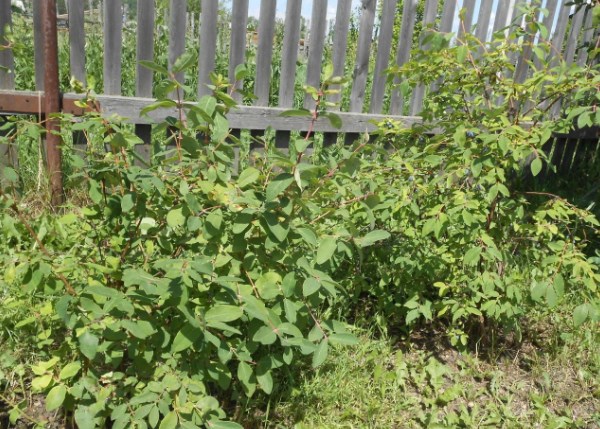
Direct landing
Step-by-step instructions for planting a honeysuckle seedling in the fall:
- Fill the planting hole in half with the nutrient mixture (preferably in advance, and then shed more for better soil shrinkage).
- Make a small mound in the center of the planting hole (if planting a seedling with an open root system).
If you are planting a seedling in a container (with a closed root system), then you do not need to make a mound, but simply plant it in a prepared planting pit (on a flat surface) without breaking the earthen coma.
- Shorten the long roots of the seedling to 30 cm, and then dip in a clay mash (creamy state).
- Place the seedling on a mound and gently spread its roots down to the sides.
Important! The roots should never bend or stick up!
- Now you can cover the roots with loose fertile soil (the top layer of your garden soil + forest floor or peat).
Advice! When you fill the seedling, it is advisable to slightly raise it so that the earth wakes up between the roots and there are no voids left.
- Compact the soil slightly.
Note! The root collar of the seedling should be buried 5-8 cm into the soil. However, given that the earth is likely to settle, it is better to initially deepen it by 2-5 cm.
Nuance! If your soil is clay, then you should not bury it at all: plant it at ground level or no more than 3 cm.
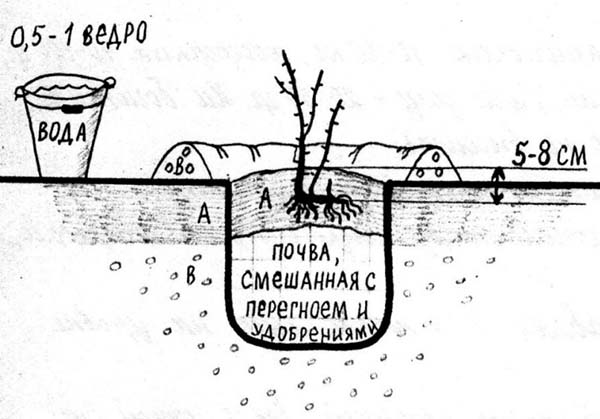
- Next, you need to make a low (5-8 cm) watering hole.
- Spill liberally, pouring out about a bucket of water. Wait until it is absorbed, add more soil if the earth settles heavily.
- Level the sides for irrigation, loosen the soil in the near-stem circle, and then slightly mulch by 1-2 cm (peat, humus).
- After the autumn planting, you do not need to cut or shorten the top.
Video: how to plant honeysuckle correctly
Honeysuckle care after autumn planting and its basic rules cultivation
If the autumn is dry, so to speak, is not rich in precipitation (rain), then be sure to water your young seedling regularly. And after lowering the temperature, slightly insulate its root system by mulching with a layer of 5 cm (if you have not done this earlier).
If you have dry north winds, then, so that the soil does not dry out, it is better to cover more thoroughly the autumn plantings of honeysuckle for the winter.
Rules for the care and cultivation of honeysuckle in the garden:
- Watering... Honeysuckle - moisture-loving plant, so it will be just fine if you get it right away mulch (sawdust, bark) and will support wet, periodically watering (especially if planted in a sunny place). Mulch will help prevent dry roots and excess moisture evaporation, and will also prevent weeds from forming.
If you plant honeysuckle in the shade of trees, there is almost always enough moisture.
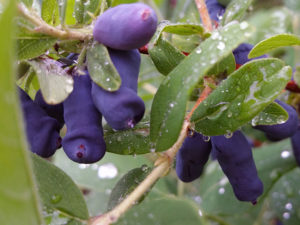
Also, do not forget about loosening the soil (to a depth of 5-8 cm) and timely weeding.
- Top dressing (the first feeding is carried out 2-3 years after planting). The shrub is very fond of organic matter. In general, it will be quite enough if you just mulch it with compost or humus (rotted manure) in early spring or late autumn (once every 1-2 years). Moreover, it is assumed that the best organic fertilizer for honeysuckle is rotted horse manure (humus)... Also, honeysuckle responds well to feeding. wood ash (potash fertilizer).
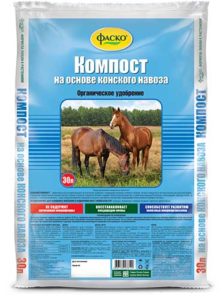
The scheme for feeding honeysuckle during the growing season with mineral fertilizers is as follows (done every 2-3 years):
- early spring (before flowering) - nitrogen fertilizers (ammonium nitrate, urea);
- after flowering - complex nitrogen-phosphorus-potassium fertilizers, for example, ammonium nitrate + superphosphate + potassium sulfate or potassium salt;
- after fruiting (in autumn) - phosphoric and potash fertilizers (superphosphate and potassium sulfate or potassium salt or similar fertilizers marked "autumn").
- Harvesting... Honeysuckle berries begin to ripen very early (1-2 weeks earlier than strawberries), while unevenly. And you also need them collect regularly, otherwise ripe fruits will simply end up on the ground.
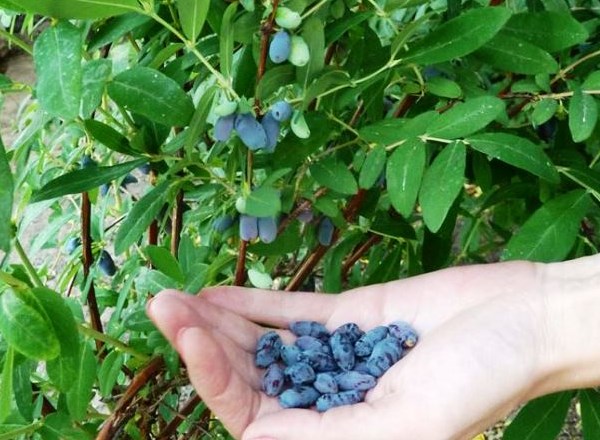
Note! If honeysuckle at the end of fruiting, leaves fall almost immediately (at the same time they turn black sharply, as if they are sick with something), then do not be surprised, this normal process, which is inherent in most plants that yield early harvest.
- Pruning... If at first (the first 3 years) the shrub grows relatively slowly (the root system is growing), then in 4-6 years the rapid growth of the aerial part begins (active shoot formation), in other words, without pruning, the bush will simply overgrow and begin to shade itself. Therefore, you will need to compulsorily conduct thinning (lightening) cropping honeysuckle.
Moreover, pruning is very convenient to carry out immediately after fruiting, while the leaves have not yet fallen (although it is possible after leaf fall), so that the state of the shoots is better seen: which are too weak and which are dry (sanitary pruning).
By the way! The site has an article about how to properly care for honeysuckle in autumn.
- Shelter... Edible honeysuckle is very hardy shrub, which is able to withstand a drop in temperature to -45 degrees, and flower buds to -8 degrees, so neither in winter nor in spring it is not afraid of any frosts and return frosts. In other words, honeysuckle does not need shelter.
But in the first year after planting, it is better to slightly insulate it, or rather to mulch it.
- Diseases and pests... As a rule, the shrubs do not infect any diseases and are not attacked by any pests, which means there is nothing to worry about. Although it is believed that before flowering, it is advisable to carry out preventive treatment against pests with an insecticidal agent (including aphids).
If you notice exfoliation of the bark, then this is not at all a cause for concern, but a biological feature of honeysuckle.
- Reproduction. Honeysuckle reproduces well cuttings, as well as layering (they pressed the branch to the ground in the spring, and in the same year it has already taken root).
Advice! About, how can honeysuckle be propagated in different ways in spring, summer and autumn, read in this detailed material.
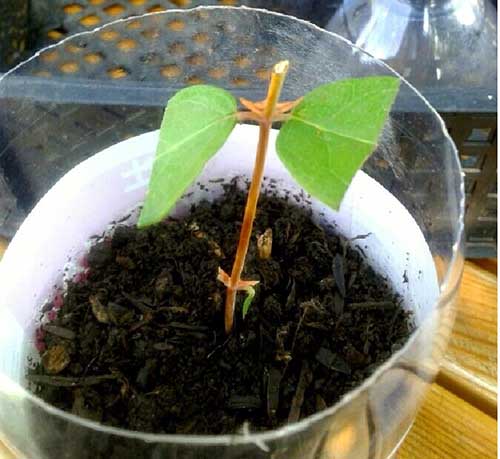
Video: planting and caring for edible honeysuckle
Well, now you know how to plant honeysuckle in the fall. The procedure, as you understood, is not complicated, but it is imperative to take into account the basic nuances and rules of growing.
Interesting! There is a well-founded opinion that since honeysuckle is a forest shrub, it needs minimal care, in other words, the main thing is to plant the seedling correctly, choosing the most suitable place in the garden, planting several bushes of different varieties for good pollination.
Video: step by step instructions for planting honeysuckle

